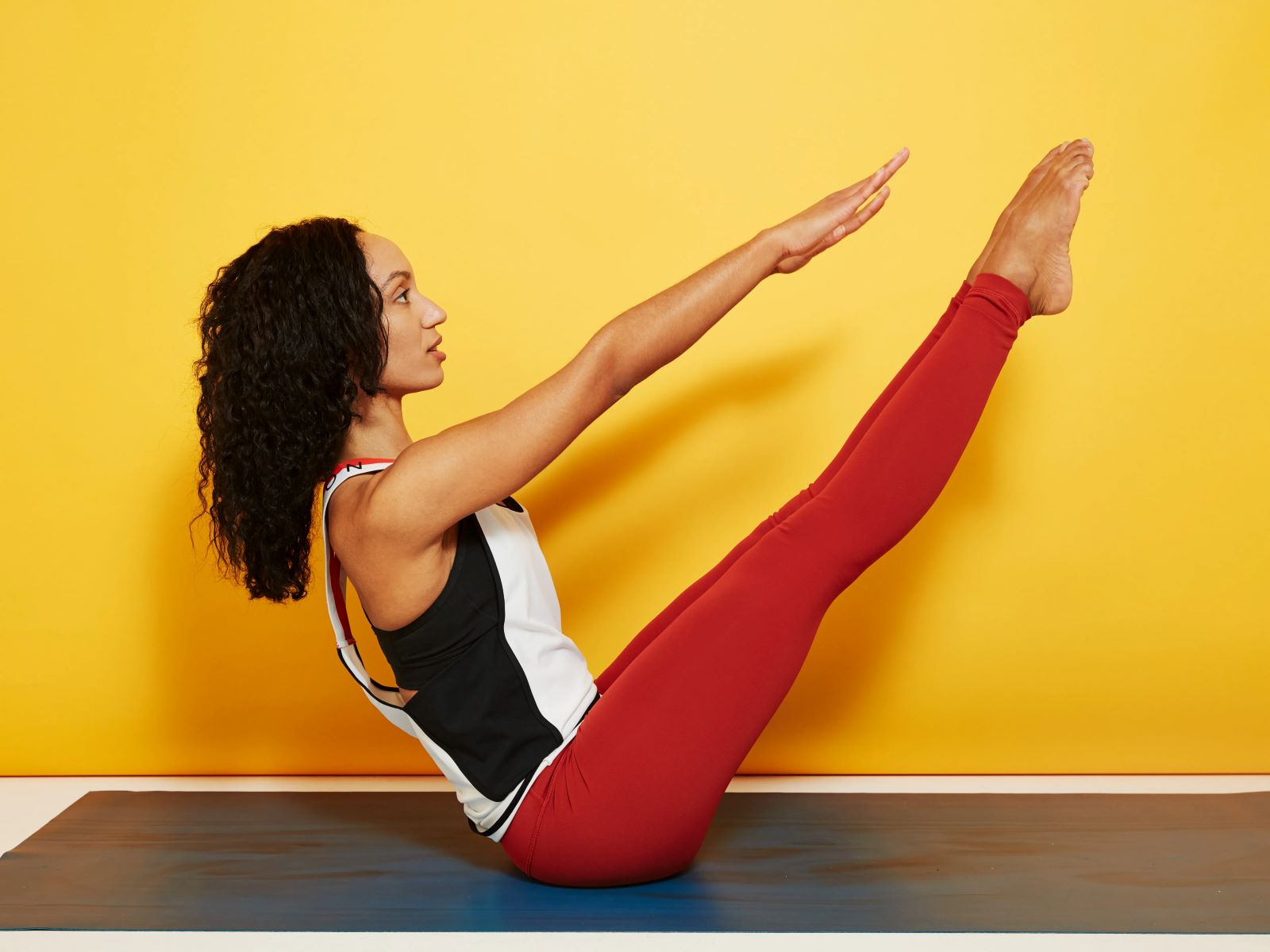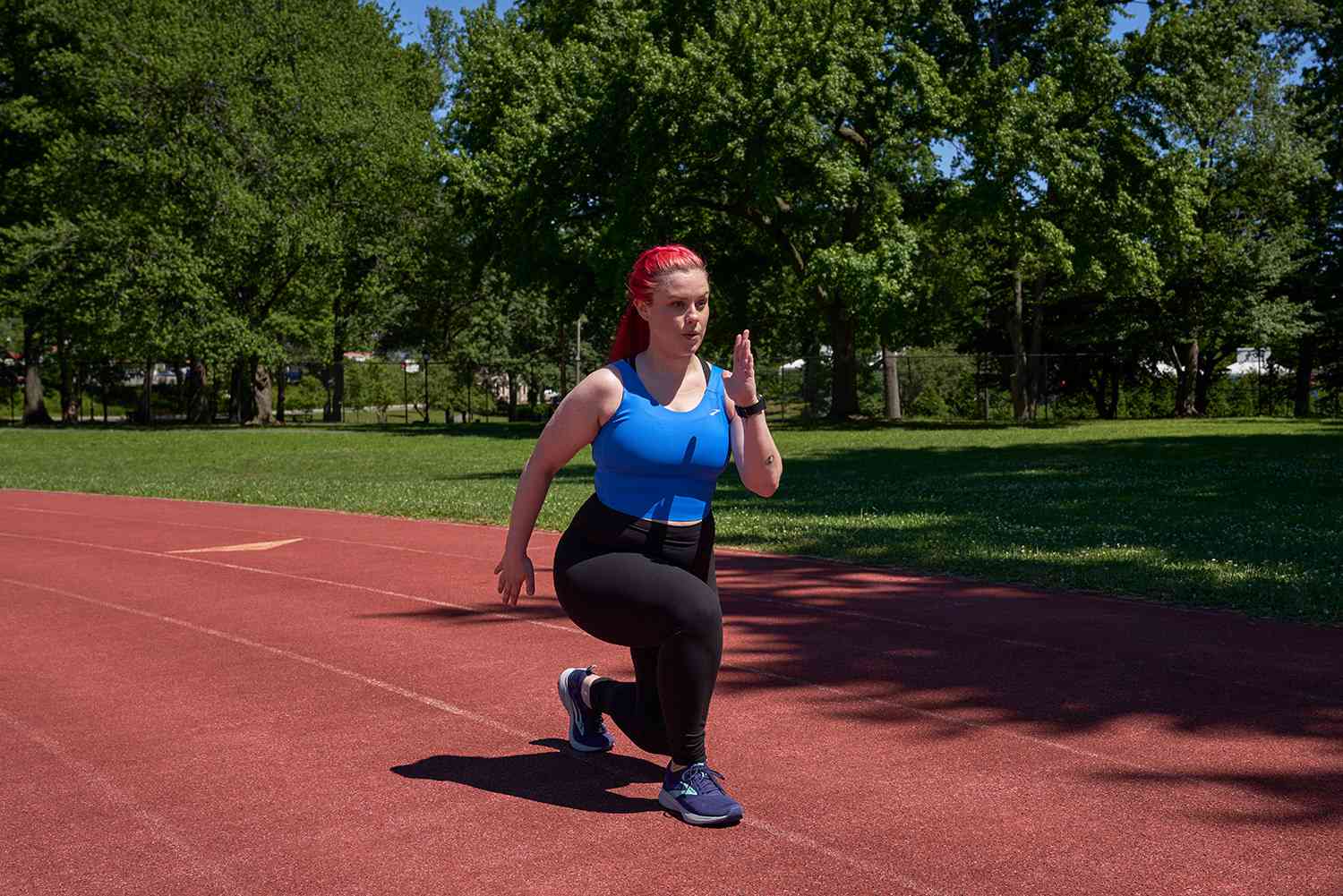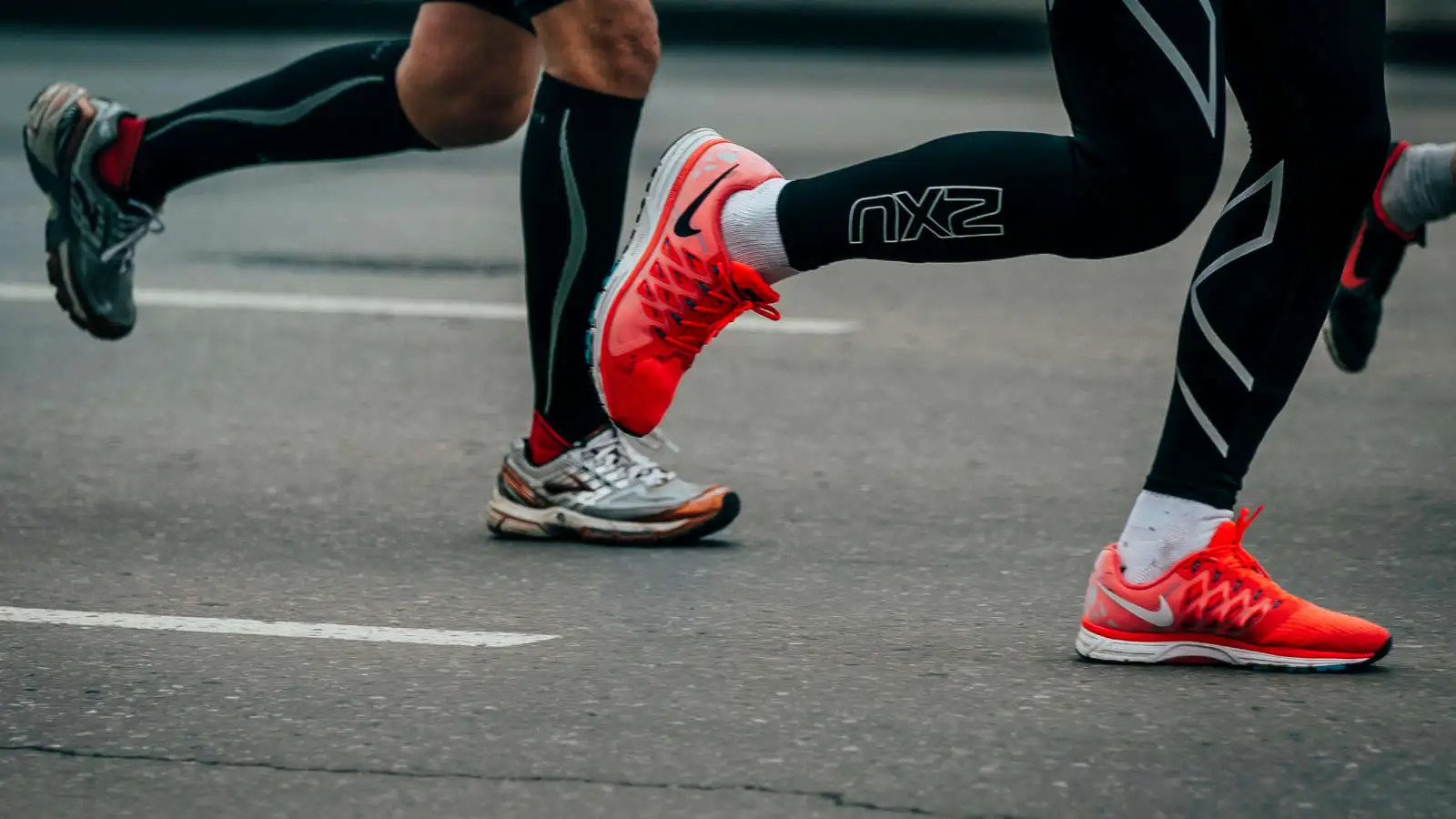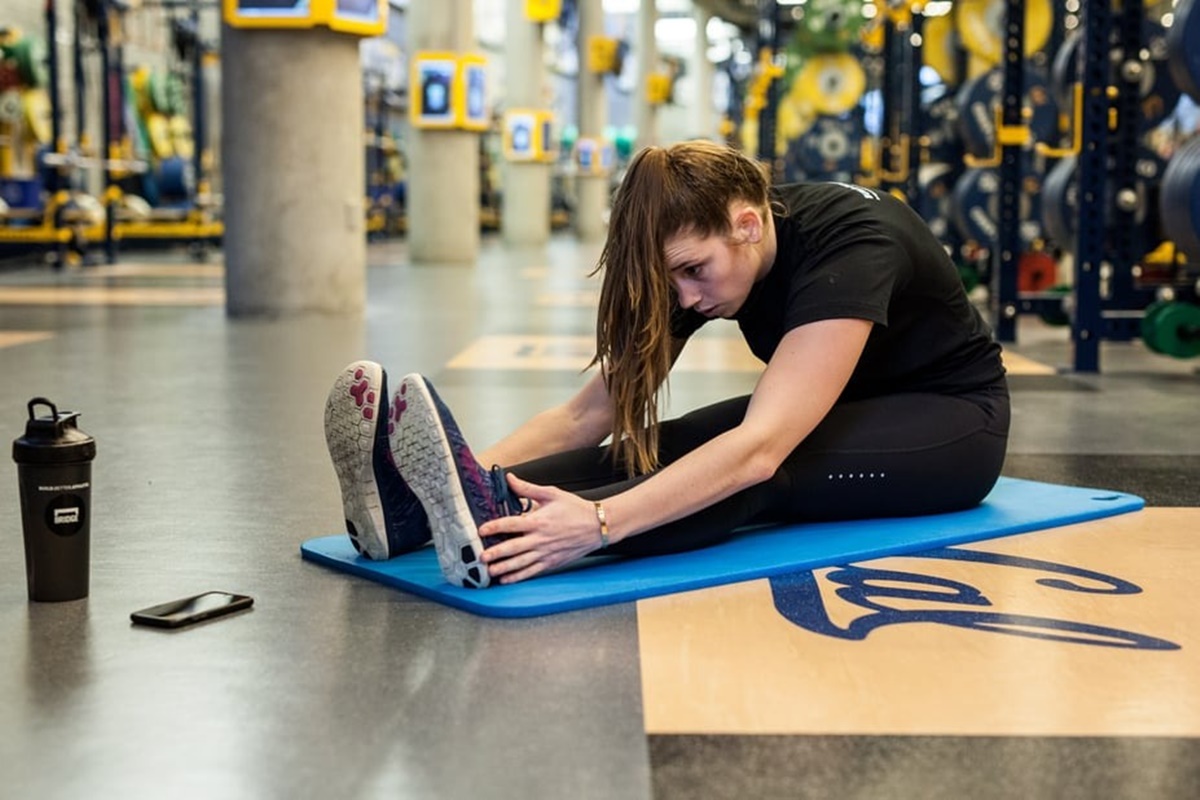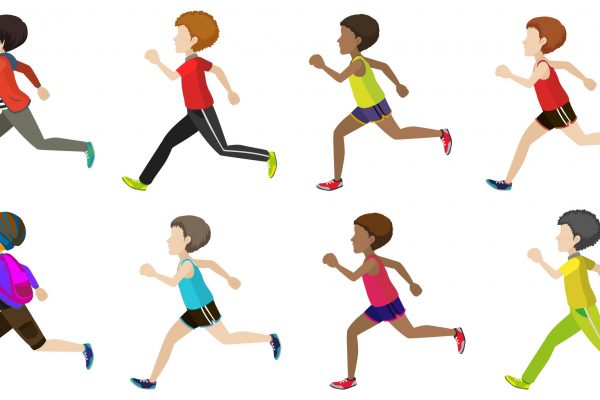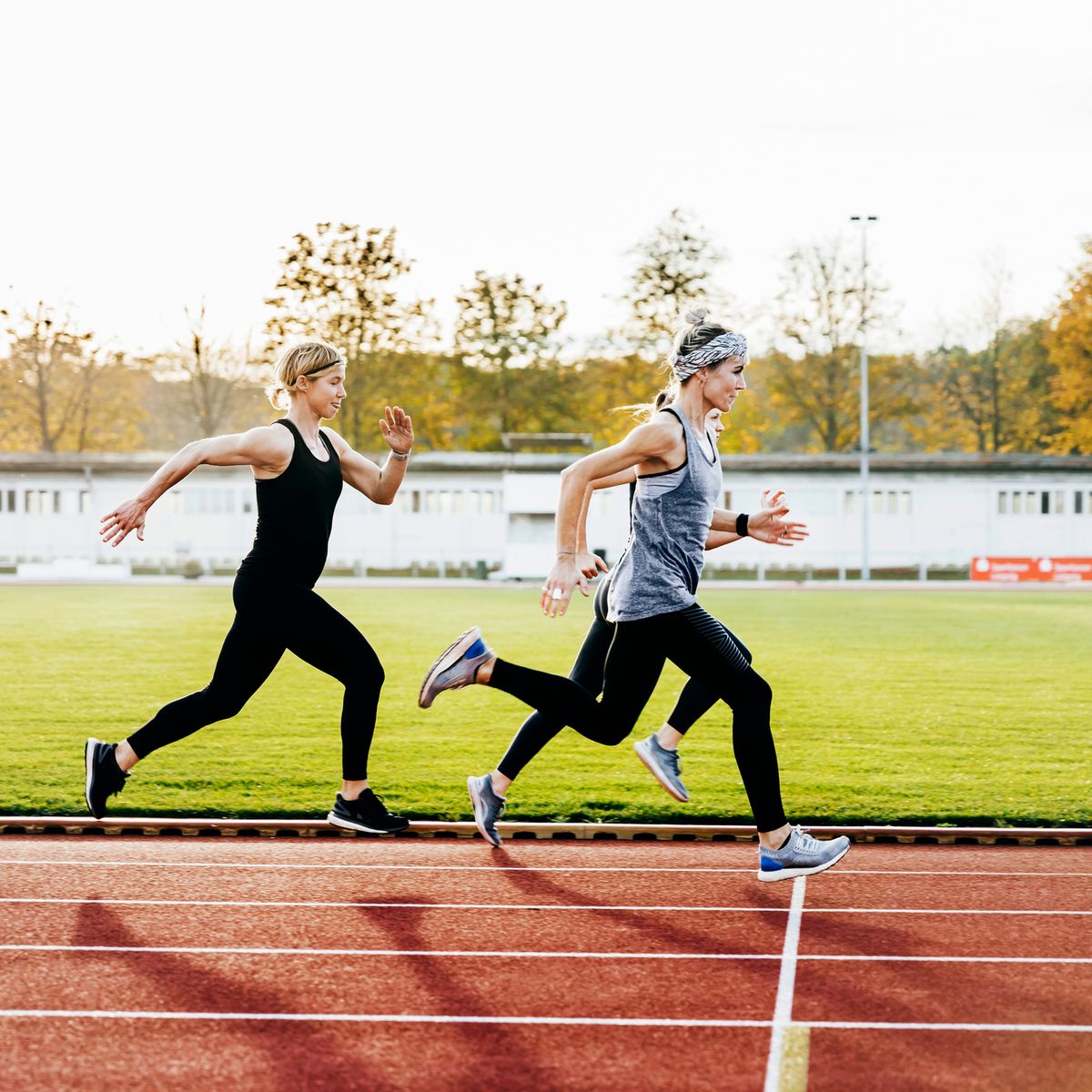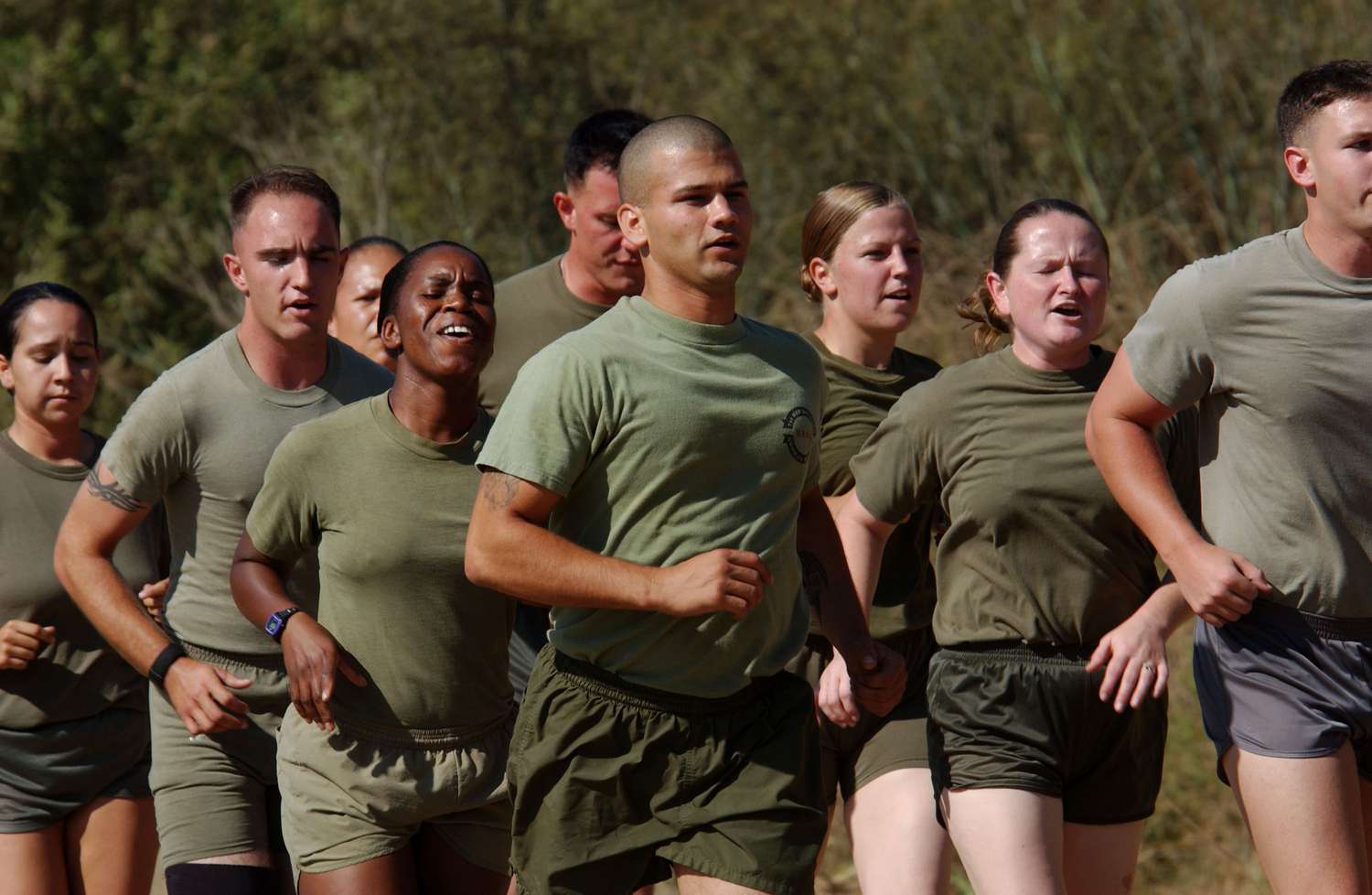Home>Misc>Featured>How Might A Person Maintain Cardiovascular Fitness When An Arm Or Leg Is Injured?
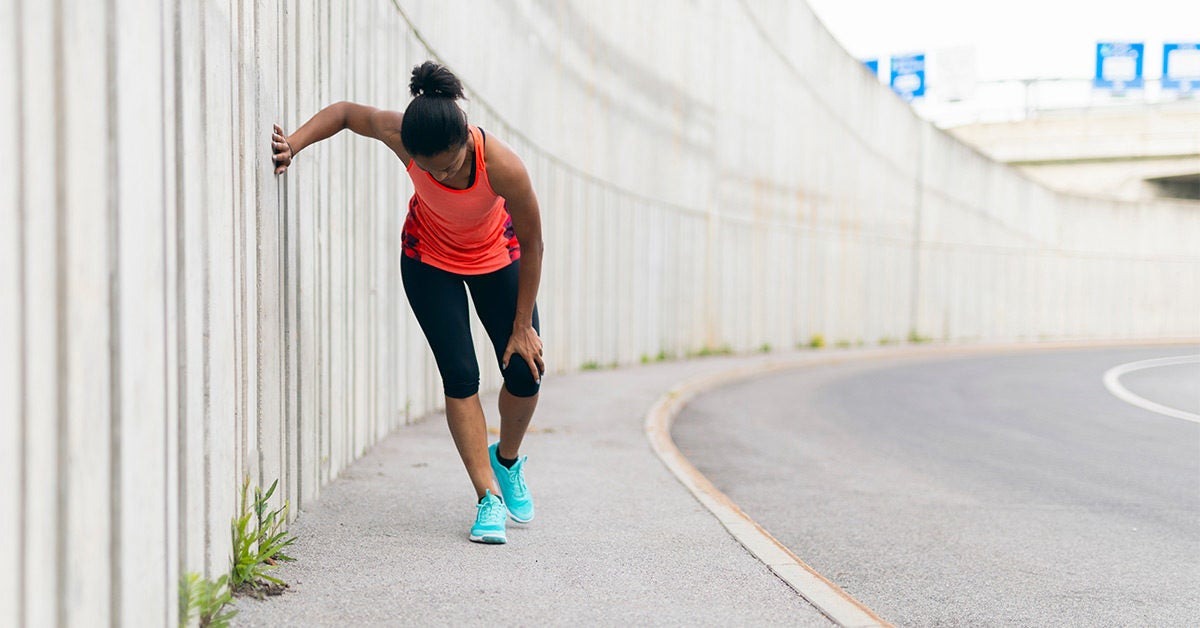

Featured
How Might A Person Maintain Cardiovascular Fitness When An Arm Or Leg Is Injured?
Modified: January 22, 2024
Discover effective ways to maintain cardiovascular fitness even when dealing with an injured arm or leg. Featured tips and exercises to keep your heart health in check!
Introduction
Welcome to this comprehensive guide on maintaining cardiovascular fitness when faced with an arm or leg injury. Injuries are an unfortunate reality of life, and they can happen to anyone at any time. Whether it’s a broken arm, a sprained ankle, or a torn ligament, these injuries can significantly impact our ability to engage in physical activities. However, even with an injured limb, it’s crucial to maintain cardiovascular fitness for overall health and well-being.
Cardiovascular fitness refers to the efficiency of our heart, lungs, and blood vessels to deliver oxygen-rich blood to our muscles during physical activity. It plays a vital role in maintaining a healthy weight, reducing the risk of chronic diseases, improving mood, and enhancing overall quality of life.
When an arm or leg injury occurs, it can be tempting to give up on exercise altogether. After all, physical activity often involves the use of our arms and legs. However, staying active is not only possible but also highly beneficial for our cardiovascular health, even when limited by an injury.
In this guide, we will explore the common arm and leg injuries that can impact our cardiovascular fitness. We will also provide strategies, exercises, and precautions to help you maintain your cardiovascular health during your recovery period. However, it is important to note that these recommendations should be used in conjunction with the advice and guidance of a healthcare professional, who can provide personalized recommendations based on your specific injury and overall health.
So, if you’re ready to learn how to keep your heart pumping and your body moving, let’s dive into the importance of cardiovascular fitness, common arm and leg injuries, and how they can impact our overall health.
Importance of Cardiovascular Fitness
Cardiovascular fitness is a cornerstone of overall health and well-being. It refers to the ability of our cardiovascular system to deliver oxygen and nutrients to our muscles efficiently during physical activity. Engaging in regular cardiovascular exercise not only strengthens our heart and lungs but also offers a multitude of benefits for our body and mind.
One of the key advantages of cardiovascular fitness is weight management. When we engage in activities such as running, swimming, or cycling, our body burns calories, helping us maintain a healthy weight or lose excess pounds. Regular cardio exercise also boosts our metabolism, which can continue to burn calories even after our workout is complete.
In addition to weight management, cardiovascular fitness plays a significant role in reducing the risk of chronic diseases. Research has shown that regular aerobic exercise lowers the risk of conditions such as heart disease, high blood pressure, type 2 diabetes, and certain forms of cancer. It can also improve cholesterol levels and reduce inflammation in the body, further decreasing the risk of cardiovascular ailments.
Exercise is not only beneficial for our physical health but also for our mental well-being. Engaging in cardio activities releases endorphins, often referred to as “feel-good” hormones, which can boost our mood and alleviate symptoms of stress and anxiety. Regular exercise has also been linked to improved sleep quality, increased cognitive function, and a decreased likelihood of developing mental health disorders.
Beyond the physical and mental advantages, cardiovascular fitness enhances our overall quality of life. It increases our stamina, allowing us to engage in daily activities with more ease and enjoyment. It improves our energy levels, making us feel more alert and productive throughout the day. Moreover, being cardiovascularly fit can boost our self-confidence and body image, improving our self-esteem and sense of well-being.
Now that we understand the vital role of cardiovascular fitness in our overall health and well-being, let’s explore how common arm and leg injuries can affect our ability to maintain this fitness level.
Common Arm or Leg Injuries
Arm and leg injuries are common and can occur due to various reasons, such as sports-related accidents, falls, or repetitive strain. These injuries can range from minor sprains and strains to more severe fractures and dislocations. Let’s take a closer look at some of the most common arm and leg injuries:
1. Fractures: Fractures, or broken bones, can occur in any part of the arm or leg. They can range from hairline fractures to complete breaks, depending on the force and impact involved. Fractures can limit mobility and require immobilization through casts, splints, or even surgery.
2. Sprains: Sprains occur when the ligaments, which connect bones and provide stability to joints, become stretched or torn. Ankle sprains are particularly common and can result in pain, swelling, and limited mobility.
3. Strains: Strains are similar to sprains but involve the stretching or tearing of muscles or tendons. They commonly occur in the arm or leg due to overuse or sudden movements and can result in pain, muscle weakness, and difficulty with movement.
4. Tendonitis: Tendonitis is the inflammation of a tendon, which connects muscles to bones. This condition often occurs in the shoulder, elbow, wrist, or knee and can cause pain, swelling, and limited range of motion.
5. Dislocations: Dislocations happen when the bones in a joint are forced out of their normal position. Commonly affected joints include the shoulder, elbow, hip, and knee. Dislocations can result in severe pain, swelling, and inability to move the joint.
6. Torn ligaments or tendons: A tear in a ligament or tendon can occur due to an injury or overuse. These injuries often require medical intervention, such as surgery, and can cause significant pain, swelling, and stability issues in the affected joint.
It is important to seek proper medical attention if you suspect an arm or leg injury. Only a healthcare professional can provide an accurate diagnosis and recommend an appropriate treatment plan to promote healing.
Now that we understand some common arm and leg injuries, let’s explore how these injuries can impact our cardiovascular fitness.
Effects of Arm or Leg Injuries on Cardiovascular Fitness
Arm and leg injuries can have a significant impact on our ability to engage in cardiovascular activities and maintain our overall fitness level. The effects of these injuries on our cardiovascular fitness can be both physical and psychological. Let’s take a closer look at some of the common effects:
1. Physical limitations: One of the most obvious effects of arm or leg injuries is the physical limitations they impose. Depending on the severity of the injury, activities that require the use of the injured limb, such as running or cycling, may be temporarily or permanently restricted. This reduction in physical activity can lead to a decrease in cardiovascular fitness levels.
2. Muscle atrophy: When we are unable to use a specific limb due to an injury, our muscles can begin to weaken and atrophy. This loss of muscle mass can lead to a decrease in overall strength and endurance, which can directly impact our cardiovascular fitness.
3. Reduced aerobic capacity: Regular cardiovascular exercise helps us improve our aerobic capacity, which refers to the body’s ability to utilize oxygen efficiently during physical activity. With an arm or leg injury, our aerobic capacity may decrease due to the limited ability to engage in aerobic exercises that require full-body movement.
4. Potential weight gain: Injuries that limit our physical activity can also increase the likelihood of weight gain. A sedentary lifestyle and decreased calorie expenditure can lead to weight gain, which can negatively affect cardiovascular health and increase the risk of chronic diseases.
5. Mental and emotional impact: The psychological impact of arm or leg injuries should not be overlooked. Dealing with the limitations and frustrations of an injury can lead to feelings of stress, anxiety, and even depression. These emotional challenges can indirectly affect our motivation and willingness to engage in cardiovascular activities.
It is crucial to address these effects and actively work towards maintaining cardiovascular fitness despite the limitations imposed by an arm or leg injury. By implementing specific strategies and modifications, individuals can continue to improve their cardiovascular health and minimize the negative impact of the injury.
Now that we understand the effects of arm or leg injuries on cardiovascular fitness, let’s explore strategies for maintaining cardiovascular fitness during the recovery period.
Strategies for Maintaining Cardiovascular Fitness with an Injured Arm or Leg
Even with an injured arm or leg, it is possible to maintain cardiovascular fitness and continue reaping the benefits of aerobic exercise. Here are some strategies to help you stay active and keep your cardiovascular health in check during your recovery period:
1. Focus on non-weight bearing exercises: If your leg is injured, you can still engage in non-weight bearing exercises such as swimming or using an arm ergometer. These activities provide an excellent cardiovascular workout without putting stress on the injured limb.
2. Choose arm-focused exercises: If your arm is injured, you can focus on exercises that primarily involve your lower body. Activities like stationary cycling, using a rowing machine, or engaging in seated leg exercises can keep your heart rate up and help maintain your cardiovascular fitness.
3. Incorporate low-impact activities: Low-impact exercises, such as walking or using an elliptical trainer, can be gentle on both the injured limb and joints. These activities provide cardiovascular benefits while minimizing the risk of exacerbating the injury.
4. Modify exercises: Modify traditional exercises to accommodate your injury. For example, if you have a sprained ankle, consider using crutches or a walking boot to provide support while walking or use a balance board to improve stability and core strength.
5. Use specialized equipment: Explore the use of specialized equipment that can assist in maintaining cardiovascular fitness while protecting the injured limb. For instance, you can use a recumbent bike or a handcycle for lower body workouts, or utilize resistance bands for upper body strength training.
6. Interval training: Incorporate interval training into your exercise routine. This involves alternating between high-intensity bursts of activity and periods of rest or lower intensity. Interval training can be an effective way to elevate heart rate, improve cardiovascular fitness, and burn calories even with a limited range of motion.
7. Consult a healthcare professional: It is crucial to consult with a healthcare professional, such as a physical therapist or sports medicine specialist, before starting any exercise program with an injured limb. They can provide personalized guidance, recommend appropriate exercises, and ensure that you are safely progressing in your recovery while maintaining cardiovascular fitness.
Remember, while it’s important to push yourself within your limitations, always listen to your body and avoid activities that cause pain or discomfort. With proper care, patience, and the implementation of these strategies, you can maintain and even improve your cardiovascular fitness while allowing your injured arm or leg to heal.
Now that we have explored strategies for maintaining cardiovascular fitness with an injured arm or leg, let’s dive into specific cardiovascular exercises that you can incorporate into your routine.
Cardiovascular Exercises for Individuals with Arm or Leg Injuries
When faced with an arm or leg injury, it’s important to find cardiovascular exercises that accommodate your specific injury while still providing an effective workout for your heart and lungs. Here are some exercises that can help you maintain cardiovascular fitness during your recovery period:
1. Swimming: Swimming is a fantastic full-body workout that is gentle on joints and does not place stress on the injured limb. Whether it’s doing laps or participating in aqua aerobics classes, swimming allows you to engage in cardiovascular exercise while supporting the healing process.
2. Stationary cycling: If you have a leg injury, stationary cycling is an excellent option. Using a stationary bike allows you to engage in low-impact exercise and maintain cardiovascular fitness without putting strain on the injured leg. Adjust the resistance and speed to create a challenging workout.
3. Rowing: Rowing machines provide a great full-body workout that can be adapted to accommodate arm or leg injuries. Use proper technique and adjust the resistance as needed to ensure a safe and effective cardio workout while protecting the injured limb.
4. Elliptical or cross trainer: These machines offer a low-impact cardio workout that mimics the motion of walking or jogging without the jarring impact on your joints. Adjust the resistance and incline to customize the level of intensity that suits your fitness level and injury restrictions.
5. Arm ergometer: An arm ergometer, also known as a handcycle, is specifically designed for upper body cardio exercise. It allows individuals with leg injuries to engage in cardiovascular workouts by using their arms to pedal. Adjust the resistance to challenge yourself and maintain or improve your cardiovascular fitness.
6. Low-impact aerobics: Low-impact aerobics classes or workout videos can provide an effective cardiovascular workout while minimizing the stress on your injured limb. Look for classes or videos that focus on exercises that do not require significant weight-bearing or impact.
7. Aqua aerobics: Aqua aerobics classes take place in a pool and provide a low-impact cardiovascular workout. The buoyancy of the water reduces stress on joints, making it suitable for individuals with both arm and leg injuries. These classes typically involve a combination of aerobic exercises, resistance training, and stretching.
Remember to start slowly and gradually increase the duration and intensity of your workouts as your injury heals. Additionally, always listen to your body and stop exercising if you experience pain or discomfort. It is essential to follow the guidance of your healthcare professional and adapt exercises to your specific injury and fitness level.
Now that we have explored various cardiovascular exercises, let’s discuss modifications you can make to traditional exercises to accommodate your injury.
Modifications to Traditional Exercises
When dealing with an arm or leg injury, it is important to modify traditional exercises to accommodate your specific condition. By making appropriate modifications, you can continue to engage in physical activity while avoiding further strain or injury. Here are some modifications to consider for common exercises:
1. Running: If you have a leg injury, proper running may not be feasible during your recovery period. However, you can modify this exercise by swapping it with brisk walking or jogging on a treadmill at a slower pace. Gradually increase the intensity and duration as your injury improves.
2. Weightlifting: If you’re accustomed to weightlifting but have an arm injury, focus on lower body exercises, such as squats, lunges, and deadlifts. These exercises engage large muscle groups while minimizing strain on your injured arm. Use resistance bands or machines that isolate the legs for targeted strength training.
3. Push-ups: If you have an injured arm, avoid traditional push-ups that put pressure on the affected limb. Instead, perform modified push-ups on your knees or against a wall to engage your chest and core muscles while protecting your injured arm.
4. Planks: Planks are a great core exercise, but if you have an injured arm, you can modify them by performing forearm planks instead. This variation reduces stress on your arm while still targeting your core muscles effectively.
5. Burpees: Burpees are a high-intensity exercise that involves both upper and lower body movements. If you have a leg injury, you can modify this exercise by eliminating the jumping and replacing it with step-ups or box squats. This modification allows you to maintain cardiovascular intensity without putting strain on your injured leg.
6. High-impact cardio: For exercises like jumping jacks, jumping rope, or high-intensity interval training, modify the impact by performing low-impact alternatives. Instead of jumping, try performing side steps or marching in place to maintain the cardiovascular benefits without aggravating your injury.
Remember to always listen to your body and stop any exercise that causes pain or discomfort. If necessary, consult with a healthcare professional or a physical therapist for personalized modifications and guidance based on your specific injury.
Now that we have explored modifications for traditional exercises, let’s discuss the use of specialized equipment to maintain cardiovascular fitness with an arm or leg injury.
Use of Specialized Equipment
Specialized equipment can be a valuable tool for individuals with arm or leg injuries to maintain cardiovascular fitness while protecting the injured limb. These devices provide alternative options for exercise and allow you to continue working out with reduced risk of further injury. Here are some examples of specialized equipment to consider:
1. Recumbent Bike: A recumbent bike is a great option for individuals with leg injuries. It features a reclined seat and pedals positioned in front of you, allowing you to pedal in a seated position without putting stress on your injured leg. Adjust the resistance to match your fitness level and gradually increase intensity as your injury heals.
2. Handcycle: A handcycle is specifically designed for individuals with lower body mobility limitations. It consists of a tricycle-like structure with hand pedals instead of leg pedals. Handcycles provide a great cardiovascular workout for individuals with arm injuries or lower body impairments.
3. Resistance Bands: Resistance bands are versatile tools that can be used to target various muscle groups without the need for heavy weights. They can offer a challenging workout while minimizing strain on your injured limb. Use resistance bands to perform exercises that focus on your upper body, such as bicep curls, tricep extensions, and shoulder presses.
4. Upper Body Ergometer: An upper body ergometer, also known as a UBE or arm ergometer, is a specialized machine that allows you to engage in cardiovascular exercise solely using your arms. It simulates the motion of rowing or cycling and provides a challenging workout for the upper body without involving the injured leg.
5. Aqua Jogging Belt: Aqua jogging belts are buoyancy aids that allow you to stay afloat in water while mimicking the motions of jogging or running. This equipment is particularly useful if you have a leg injury as it provides a low-impact cardiovascular workout without putting stress on the injured limb.
6. Pool Noodles or Kickboards: In the pool, you can use pool noodles or kickboards to perform exercises that maintain cardiovascular fitness. For example, you can hold a pool noodle with both hands and perform bicycle kicks or scissor kicks to engage your lower body while avoiding weight-bearing on the injured leg.
Remember to consult with a healthcare professional or a physical therapist to determine which specialized equipment is most suitable for your injury and overall fitness goals. They can provide guidance on proper usage, intensity, and duration of workouts to ensure optimal benefits and safety.
Now that we have explored the use of specialized equipment, let’s emphasize the importance of consulting a healthcare professional when dealing with an arm or leg injury.
Importance of Consulting a Healthcare Professional
When dealing with an arm or leg injury, it is essential to consult a healthcare professional, such as a doctor, physical therapist, or sports medicine specialist. Their expertise and guidance are invaluable in ensuring a safe and effective recovery while maintaining cardiovascular fitness. Here are some reasons why consulting a healthcare professional is crucial:
1. Accurate diagnosis: Healthcare professionals possess the necessary knowledge and tools to provide an accurate diagnosis of your arm or leg injury. They can assess the severity, identify any underlying issues, and guide you towards the most appropriate treatment plan.
2. Personalized recommendations: Each injury and individual is unique. A healthcare professional can provide personalized recommendations based on your specific injury, overall health, and fitness goals. They can tailor exercise programs, suggest modifications, and advise on the best exercises for maintaining cardiovascular fitness during your recovery.
3. Prevention of further damage: Incorrect or excessive exercise can worsen your injury and prolong the recovery process. By consulting a healthcare professional, you can learn which activities to avoid and which exercises are safe and beneficial for your specific condition.
4. Proper rehabilitation: A healthcare professional can guide you through a structured rehabilitation program that includes targeted exercises, stretching, and other therapies to facilitate healing, restore function, and prevent re-injury. They can monitor your progress and make necessary adjustments throughout the recovery process.
5. Management of pain and inflammation: If you are experiencing pain or inflammation as a result of your arm or leg injury, a healthcare professional can recommend appropriate pain management strategies, such as medication, physical therapies, or other non-invasive interventions. Their expertise can help alleviate discomfort and promote healing.
6. Prevention of complications: Certain arm or leg injuries, if not properly managed, can lead to complications such as chronic pain, reduced range of motion, or muscle imbalances. By consulting a healthcare professional, you can receive guidance on exercises and precautions that can help prevent such complications and promote a more complete recovery.
Remember that the information provided in this guide is general and may not be suitable for everyone. Every injury is unique, and the guidance of a healthcare professional is essential for an appropriate and effective recovery. Work with them to develop a comprehensive plan that addresses your specific needs, limitations, and goals.
Now that we understand the importance of consulting a healthcare professional, let’s conclude our guide on maintaining cardiovascular fitness with an injured arm or leg.
Conclusion
Dealing with an arm or leg injury can be challenging, but it doesn’t mean you have to put your cardiovascular fitness on hold. By following the strategies, modifications, and recommendations outlined in this guide, you can maintain and even improve your cardiovascular health during the recovery period.
Remember the importance of cardiovascular fitness for overall health and well-being. It plays a vital role in weight management, reducing the risk of chronic diseases, improving mood, and enhancing overall quality of life.
Although arm or leg injuries can limit your ability to engage in certain activities, there are plenty of alternatives that can still provide an effective cardiovascular workout. From swimming and stationary cycling to rowing and aqua aerobics, there is a wide range of exercises and specialized equipment available to accommodate your specific injury and maintain your cardiovascular fitness.
Consulting a healthcare professional is essential in developing a personalized plan to ensure safe and effective recovery. They can provide accurate diagnoses, personalized recommendations, and appropriate modifications to exercises. Working with a healthcare professional will help prevent further damage, manage pain and inflammation, and guide you through the rehabilitation process.
Remember to listen to your body, take it slow, and gradually increase the intensity and duration of your workouts as your injury heals. Always prioritize safety and avoid any exercises that cause pain or discomfort.
By taking proactive steps, seeking expert guidance, and staying dedicated to your cardiovascular health, you can overcome the challenges of an arm or leg injury and maintain your fitness level. Stay determined and focused, and you will emerge from your recovery period with improved cardiovascular fitness and a renewed sense of well-being.

